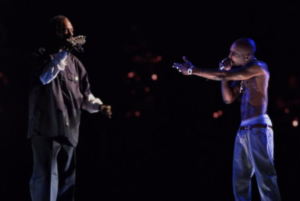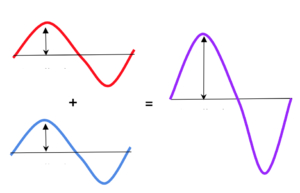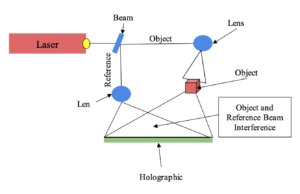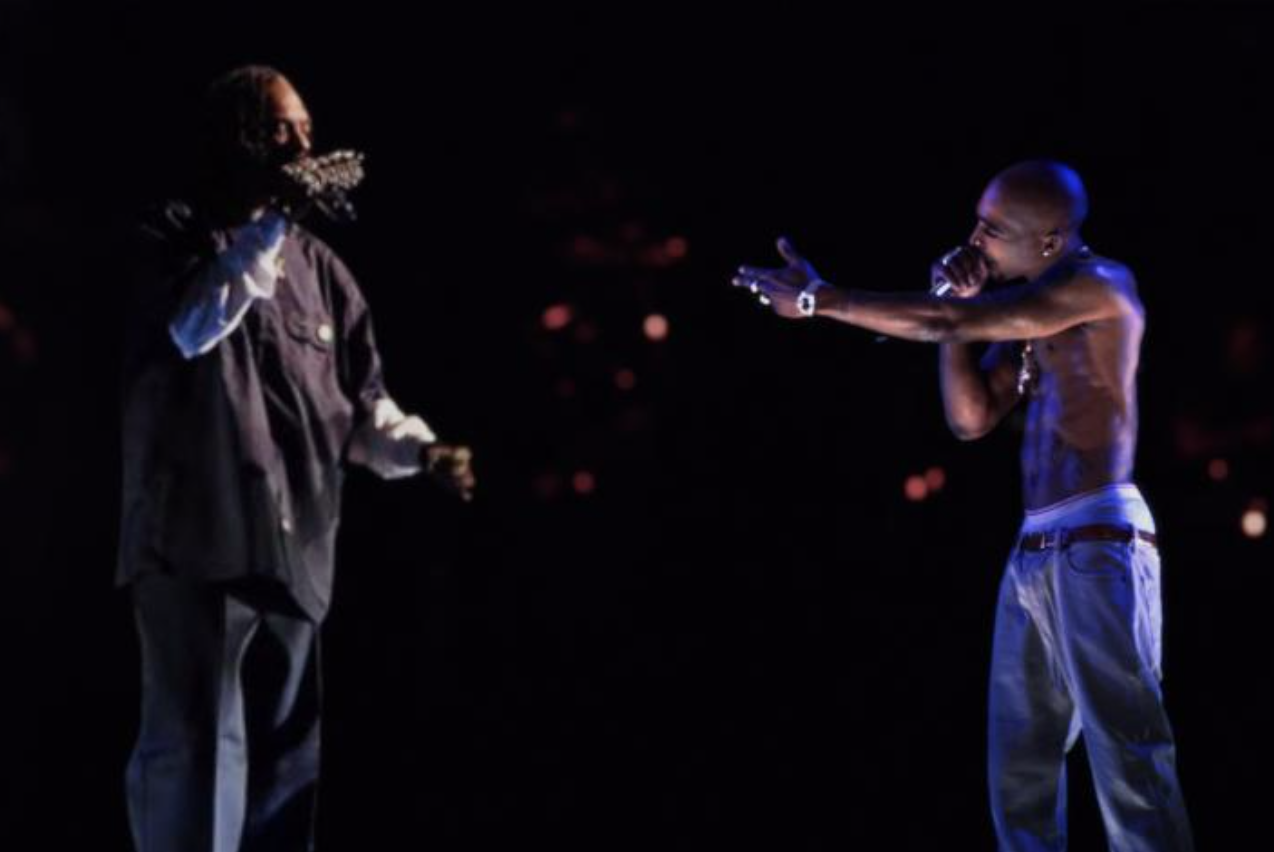Abstract
First appearing in popular movies like Star Wars, the idea of 3D holograms captured and confused the world. While the idea was born over seventy years ago, it wasn’t until recent advances in technology that holograms transitioned from the fantasy world of the movies to real life. In fact, 3D holograms are so prevalent now that they are used in storefronts, doctors’ offices, the military, and even to bring your favorite musicians back to life. Its expansion into everyday life is far from over as it continues to blur the lines of reality in ways we never imagined possible.
Introduction
In April of 2012, thousands of festival goers looked up in awe as Tupac Shakur, who had died fifteen years prior, performed live on the Coachella stage. Fans roared, not believing their eyes, as they watched Tupac sing, dance, and interact with the crowd [1]. Except this wasn’t Tupac. This wasn’t magic. This was a hologram. At this moment, after almost believing Tupac had appeared before their eyes, many people began to see the true power of hologram technology. Holograms allow people and things to appear where they’re not, and more importantly, give life to light.
While Tupac’s hologram wasn’t the first ever created, its projection at such a large popular culture event reignited curiosity about holograms and their applications. Since 2012, holograms have expanded into the entertainment industry, leading to the widespread use of holograms to project dead musicians in concert. This has driven the creation of many companies dedicated to producing holograms to meet the growing demand and excitement towards them. What’s more, holograms have extended beyond the entertainment industry, changing our perceptions of how businesses operate in many different industries [1].

Figure 1: Tupac’s hologram (right) at Coachella 2012 [2]
History of the Hologram
The invention of the 3D hologram as we know it today began with the work of Dennis Gabor. In 1947, he began establishing many of the foundations for holographic theory and the idea of capturing the interference pattern of two waves on a screen. However, testing his theories proved to be very difficult due to technical limitations with the electron microscope at the time. It wasn’t until the 1960s, with the invention of the laser (a coherent light that is monochromatic and comes from a single source), that he was able to create clear holographic images. Dennis Gabor won the Nobel Peace Prize for physics in 1971 as the founder of holography [4].
Unaware of Gabor’s work, Yuri Denisyuk, a scientist from the Soviet Union, discovered light interference could be used to produce three-dimensional images. His work was not received well in the Soviet Union, as they didn’t believe in the science behind holography. However, after meeting with a group of American scientists, his work was recognized and well accepted [5]. Following this, a number of individuals contributed to the progress of holograms to get to where they are today. This includes Lloyd Cross, who created the first 3D holographic image that could move, and Victor Komar, who developed the first holographic screen [6]. Since then, holograms have continued to advance through new technology such as more precise lasers and new high-quality holographic screens.
What is a 3D hologram?
A 3D hologram is a projection of an object. It uses the diffraction of light to recreate an exact image of an object. However, unlike normal images, holograms are parallax, meaning they look different based on the angle at which they are viewed [3]. While a photograph only captures a 2D view of a 3D object, holograms can capture the full 3D view of a 3D object. This allows all sides of the object to be viewed, not just the front side that is shown by a photograph, as if the object were really in front of you.
A hologram has four major components: a laser, a beam splitter, two lenses, and a holographic screen. These pieces work together to copy an image and project it through the interference of the laser beams.
How do 3D holograms work?
Holograms are formed around one basic principle: interference. Understanding this concept reveals the secret behind the magical 3D hologram images that seemingly appear out of nowhere.
Interference describes how a wave interacts when it crosses the path of another wave. It can be either constructive or destructive. Constructive interference occurs when the waves’ oscillations at a given point are in the same direction, causing the amplitudes of the two waves to add up and produce a much bigger wave. These are seen as bright fringes or areas of high light intensity. On the other hand, destructive interference occurs when the waves’ oscillations at a given point are in opposite directions, causing the amplitudes of the two waves to subtract and cancel out as if there was no wave. These are seen as dark fringes or areas with no light. In holograms, a laser beam projects light waves that interfere to form a pattern of both constructive and destructive interference with bright fringes and dark fringes [7].

Figure 2: Constructive Interference

Figure 3: Destructive Interference

Figure 4: Interference Patterns that Holograms Show [8]
These areas of light and dark fringes produce a pattern of an image that is then projected in a hologram. If you look closely at a hologram, it’s a conglomeration of these dark and light fringes projected into the air. These areas of dark and light are produced by the interference patterns, as described above.
The physical construction of the hologram begins with the interference pattern source, the laser beam. Laser beams produce coherent light, waves of the same wavelength that travel in the same direction. This is vital to the creation of a hologram as it produces precise dark and light fringes, making the hologram clear to see. In the first step, the laser beam emits waves that are split into two beams with a beam splitter. These two beams, called the reference beam and the object beam, individually pass through a lens to separate the light. The reference beam is shone directly onto the holographic screen. At the same time, the object beam is shone onto the object that will be projected and bounces back onto a holographic screen. On the holographic screen, the two different beams interact to form an interference pattern specific to the object that you are projecting. This is essentially a copy of the original object as an interference pattern on the holographic screen [3]. To project the object interference pattern in space, light is reflected through the back of the holographic film. By reflecting light through the other side of the holographic film, it gives the appearance of the interference pattern floating in space in front of the film, producing a hologram of the original object in the air.

Figure 5: Construction of a Hologram
Where are holograms used?
As a hologram is simply a projection of an image, it has easily been applied to a variety of industries since its invention in the late 1940s. The medical industry has seen a rise in hologram use to project organs in the operating room, allowing doctors to be more precise during surgeries. Additionally, the military industry has begun using holograms for landscape mapping. However, currently there are two major areas that have gained considerable recognition for their implementation of holograms: the entertainment industry and storefronts.
The Entertainment Industry
As we know, holograms found their way into the entertainment industry by displaying late musicians. Starting with Tupac at Coachella in 2012, 3D holograms of musicians have continued to be developed further, becoming more realistic, lifelike, and accurate. During this process, the required technology has become more complex, coming with its fair share of challenges.
Creating holograms of deceased people has added a new level of complexity to hologram technology. Due to the passing of the individual, one cannot simply reflect light off of the person to create a mirror image holographic projection. Instead, projecting a holographic image of a deceased person first requires filming another person dancing or performing the routine that you would like to project. Then, the face of that person is replaced with that of the artist. Facial features are “rigged” and tied to that of the original person, using new software and programming. This means that when the filmed person raises an eyebrow, the artist’s face also raises an eyebrow, allowing the hologram to emulate human expression. Finally, facial movements are captured using a multitude of cameras. Neural networks, computer systems modeled on the human brain and nervous system, are used to be able to complete the entire facial reconstruction process [9]. This is done so seamlessly that differences between the hologram and late artist are almost impossible to spot, tricking the mind into thinking that you are indeed seeing your favorite late artist perform.
This technology has evolved substantially and this year Amy Winehouse, who passed away in 2011, will be going “on tour” [9]. Despite her passing eight years ago, millions of people will be able to see Winehouse perform as a result of revolutionary advances in hologram technology. With many people excited about the potential of holograms in the entertainment industry, companies specializing in creating these holograms have risen. Companies such as Base Hologram and Hologram USA have created their own niche field within the entertainment industry in attempts to take their stake in the growing popularity of hologram musician tours [9]. Due to high popularity and demand, it is likely that this industry will only continue to grow.
Storefronts
Just as holograms have been able to captivate audiences in the entertainment industry unlike before, they have significantly increased customer engagement in business storefronts. Whether they be at the front of the store greeting customers, displaying clothes like a mannequin, assisting customers at checkout, or handing out coupons, holograms are able to create a more immersive environment in stores [10]. While they can often be expensive for retail store owners to purchase outright at a price of $100,000, they can offer huge advantages for store owners. For example, in many retail stores, mannequins are used to display clothing. By replacing these mannequins with holograms, a store can provide a more accurate representation of what an item of clothing would look like on a human body. A hologram projection of a person wearing an item of clothing has proven more effective as it gives more dimension and fluidity than a mannequin, leading to higher sales and overall profit [11].
Since its initial implementation in a Canadian retail chain in 2014, storefront holograms have become increasingly more cost-effective and advanced. This has led more and more stores to implement the 3D hologram technology. In fact, many believe that holograms and augmented reality devices hold the future of storefronts and that failing to adapt to these new technologies, especially in high tech stores, could result in an inability to compete with other companies [10]. Thus, it is likely that you will begin to see holograms in many stores near you in the future.
Conclusion
Over the years, holograms have quickly transitioned from the fantasy world displayed in Hollywood movies like Star Wars, to an increasingly substantial part of everyday life. Holograms can greet you at stores, display your organs at a doctor’s office, and even bring your favorite artists back to life on stage. As technology advances and holograms become cheaper, there’s no doubt that they will continue to reinvent every industry they enter. Due to their versatility in application, there are few limitations to the ways that holograms can be used. Holograms can be expected to continue to blur the lines of reality for many years to come.
References
[1] K. Mason, “Are Biggie & Bowie Next Up for the Hologram Treatment?,” Billboard, 09-Mar-2017. [Online]. Available: https://www.billboard.com/articles/news/magazine-feature/7717065/holograms-peter-martin. [Accessed: 19-Jan-2019].
[2] A. Dodson, “The strange legacy of Tupac’s ‘hologram’ lives on five years after its historic Coachella debut,” The Undefeated, 14-Apr-2017. [Online]. Available: https://theundefeated.com/features/the-strange-legacy-of-tupacs-hologram-after-coachella/. [Accessed: 26-Jan-2019].
[3] “What is Holography?” Holocenter: Center for the Holographic Arts. [Online]. Available: http://holocenter.org/what-is-holography. [Accessed: 19-Jan-2019].
[4] “Dennis Gabor,” Lemelson-MIT Program. [Online]. Available: https://lemelson.mit.edu/resources/dennis-gabor. [Accessed: 20-Jan-2019].
[5] “History of Holography,” Holographic Studios, 22-Mar-2016. [Online]. Available: https://www.holographer.com/history-of-holography/. [Accessed: 20-Jan-2019].
[6] P. Oravec, “History of Holography,” Possibilities and Prospects of Holography. [Online]. Available: http://www.holografia.wz.cz/holography/History_of_Holography.php. [Accessed: 20-Jan-2019].
[7] “Interference of Waves,” Boston University Physics. [Online]. Available: http://physics.bu.edu/~duffy/py105/WaveInterference.html. [Accessed: 20-Jan-2019].
[8] P. Palevicius, M. Ragulskis, G. Janusas, and A. Palevicius, Proceedings of SPIE. Bellingham, WA, 1993.
[9] P. Donoughue, “Dead musicians are touring again, as holograms. It’s tricky – technologically and legally,” ABC News, 28-Dec-2018. [Online]. Available: https://www.abc.net.au/news/2018-12-29/hologram-technology-letting-dead-musicians-tour-again/10600996. [Accessed: 19-Jan-2019].
[10] J. Ness, “Smaller And Full Of Holograms: The Storefront Of Tomorrow,” Fast Company, 20-Feb-2015. [Online]. Available: https://www.fastcompany.com/3040517/smaller-and-full-of-holograms-the-storefront-of-tomorrow. [Accessed: 27-Jan-2019].
[11] “Rear holographic projection,” Holographic rear projection on storefront – Rental projection equipment. [Online]. Available: https://www.interactive-studio.fr/en/holographic-rear-projection-on-storefront. [Accessed: 19-Jan-2019].




